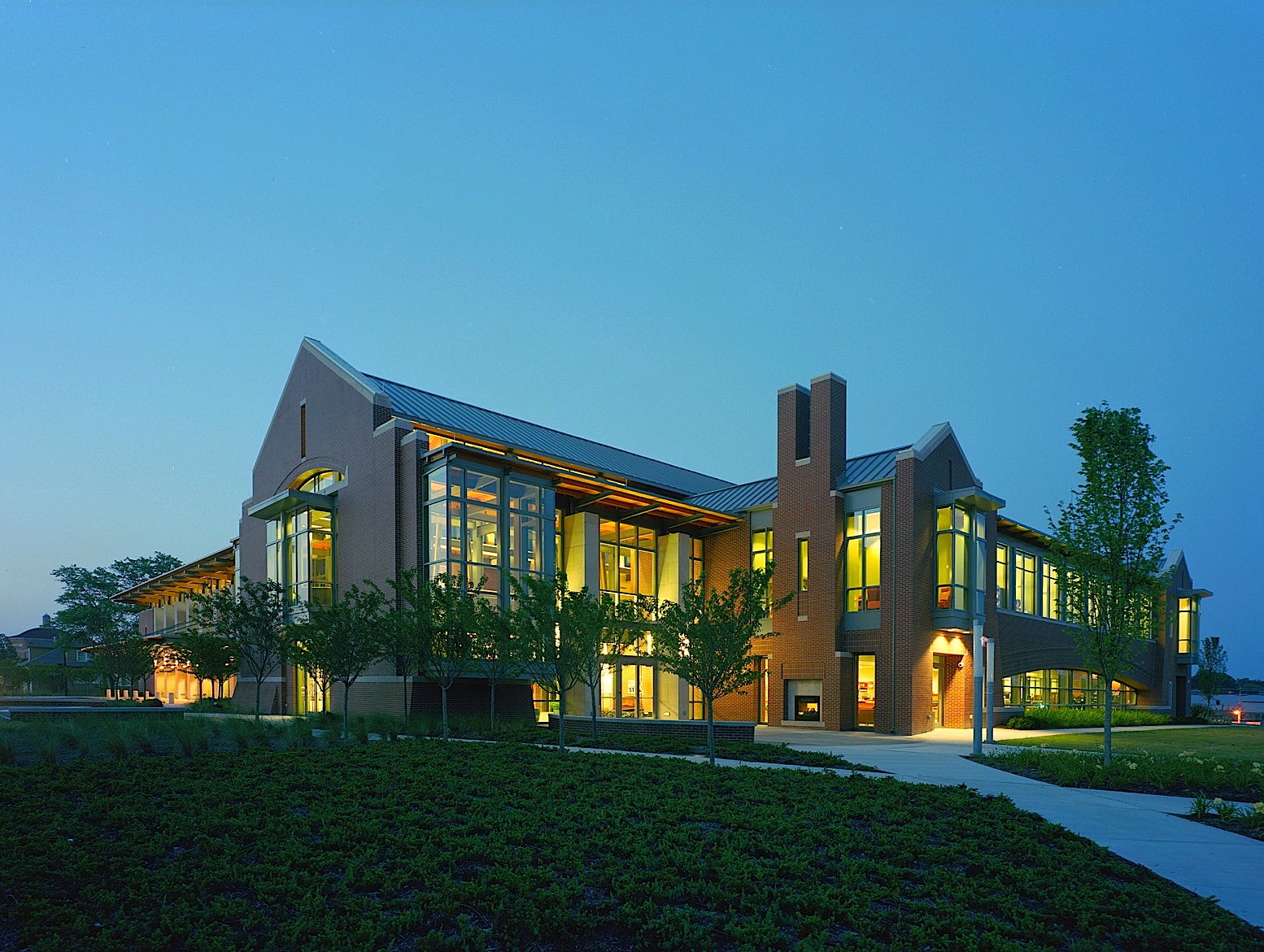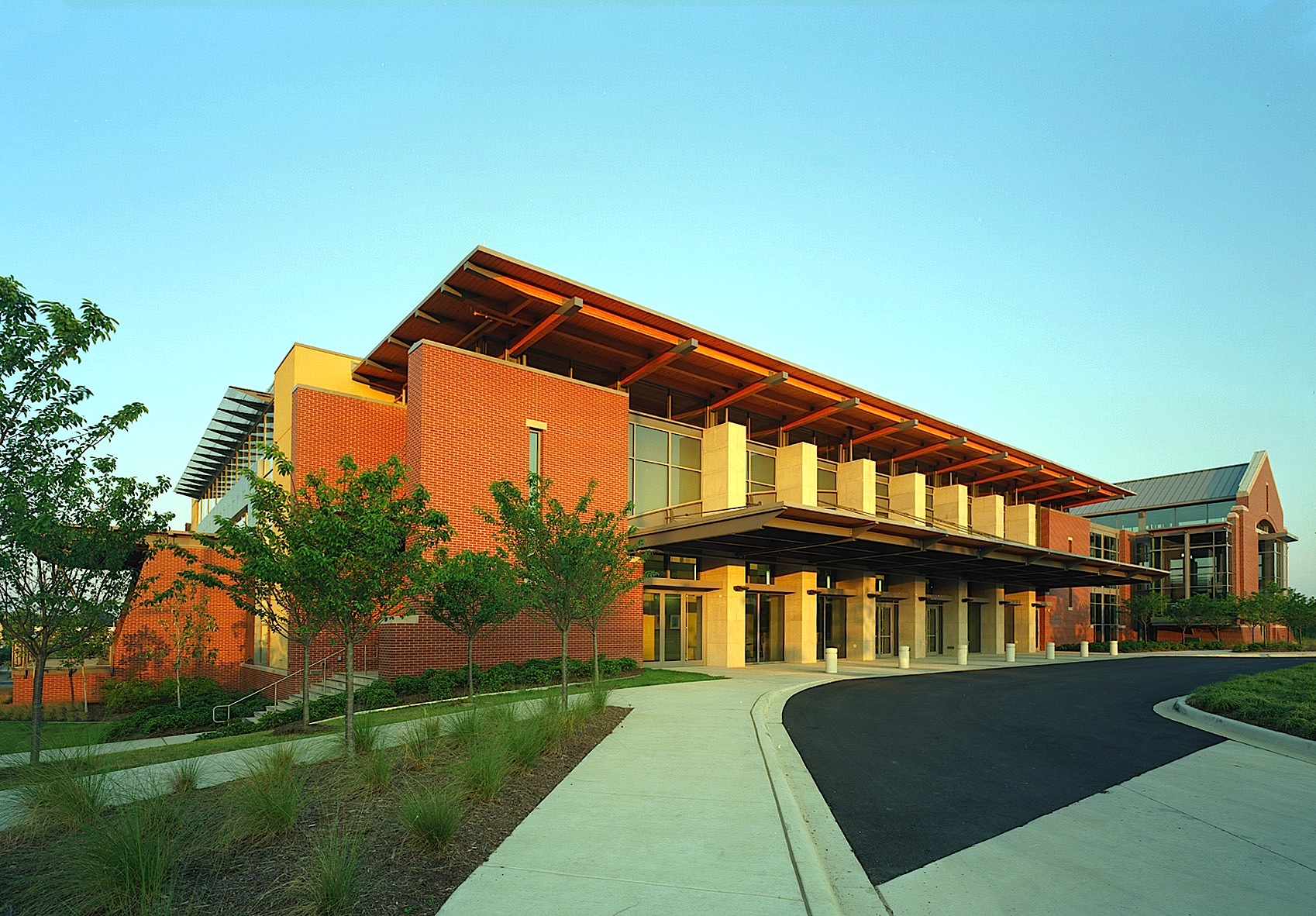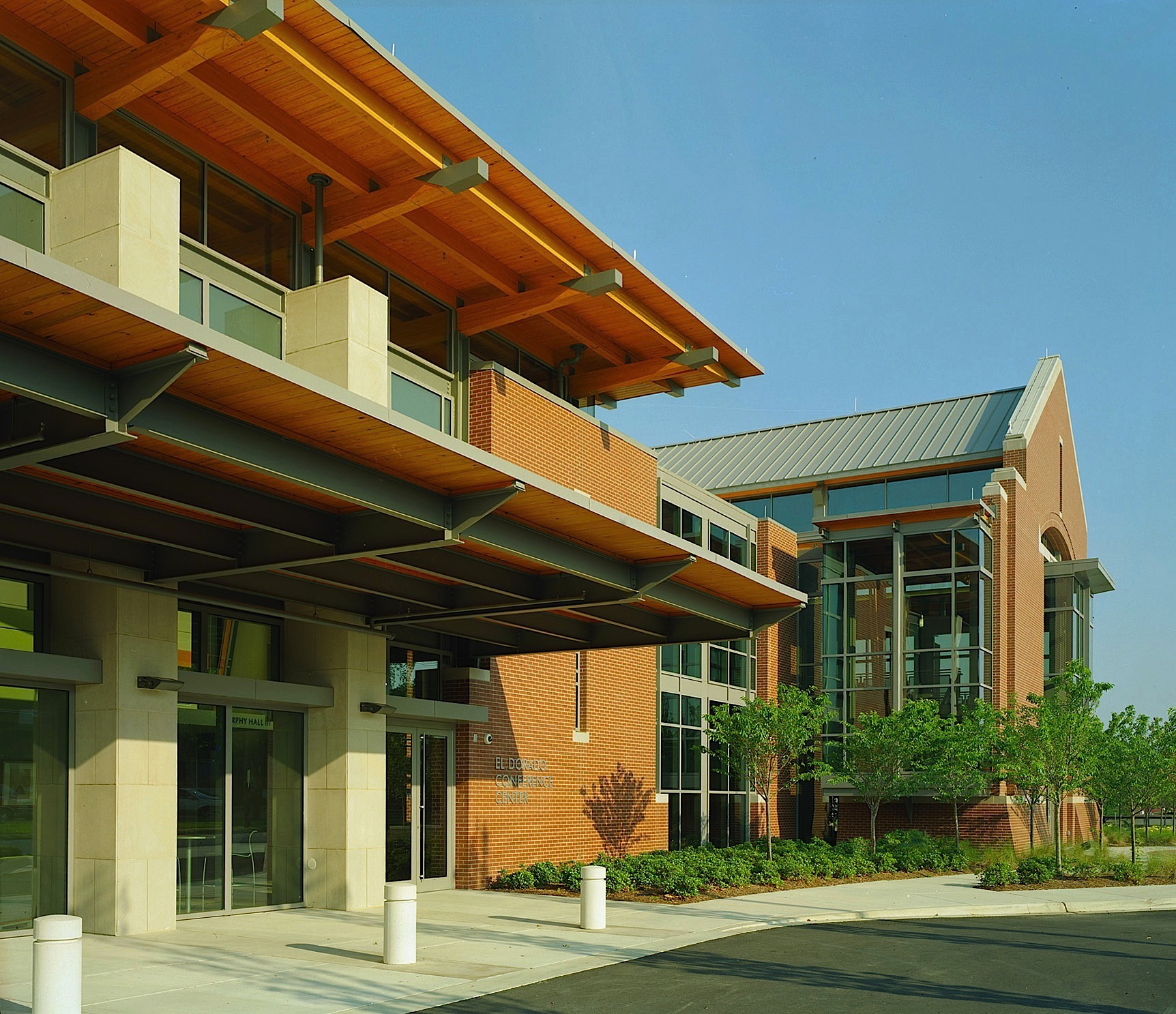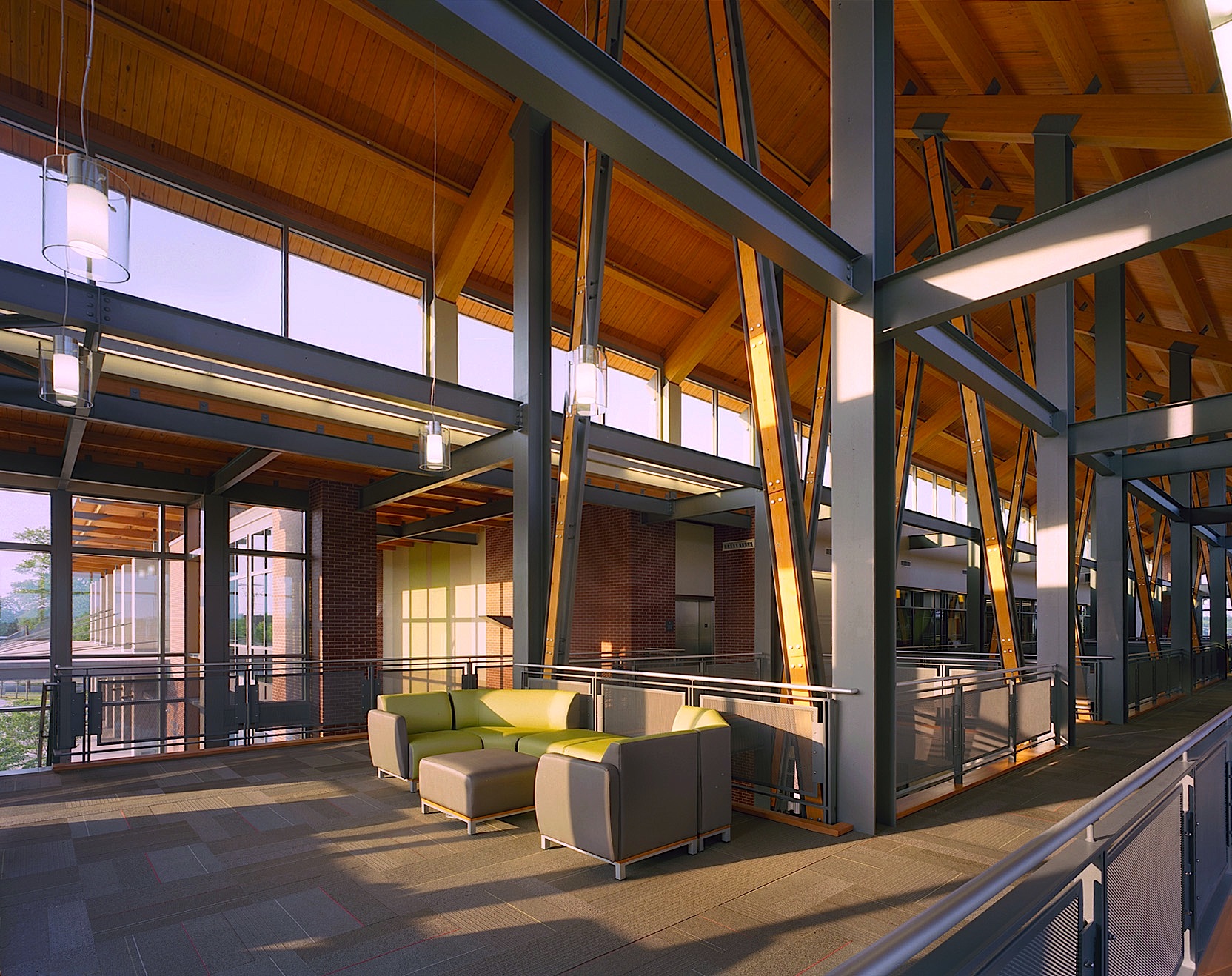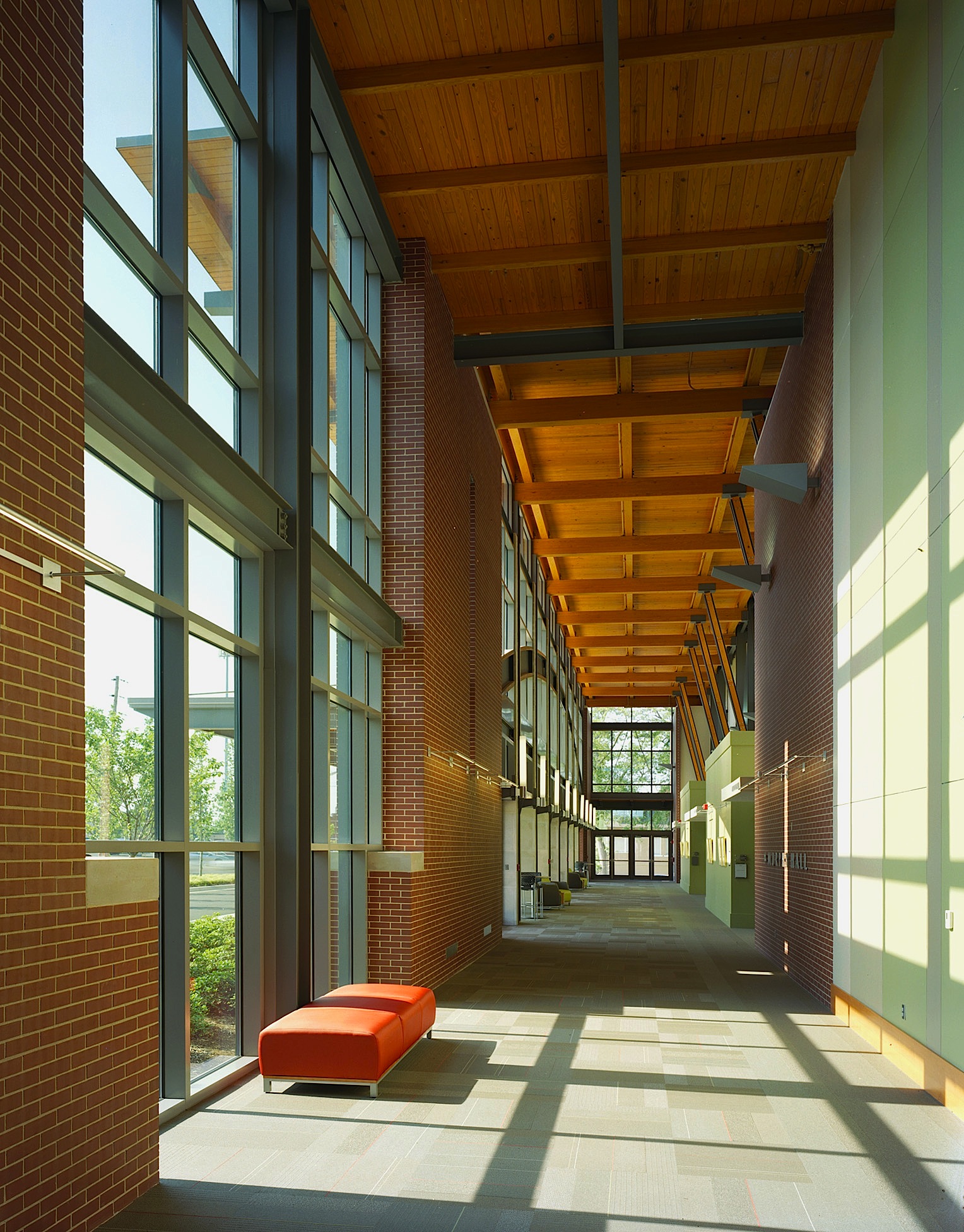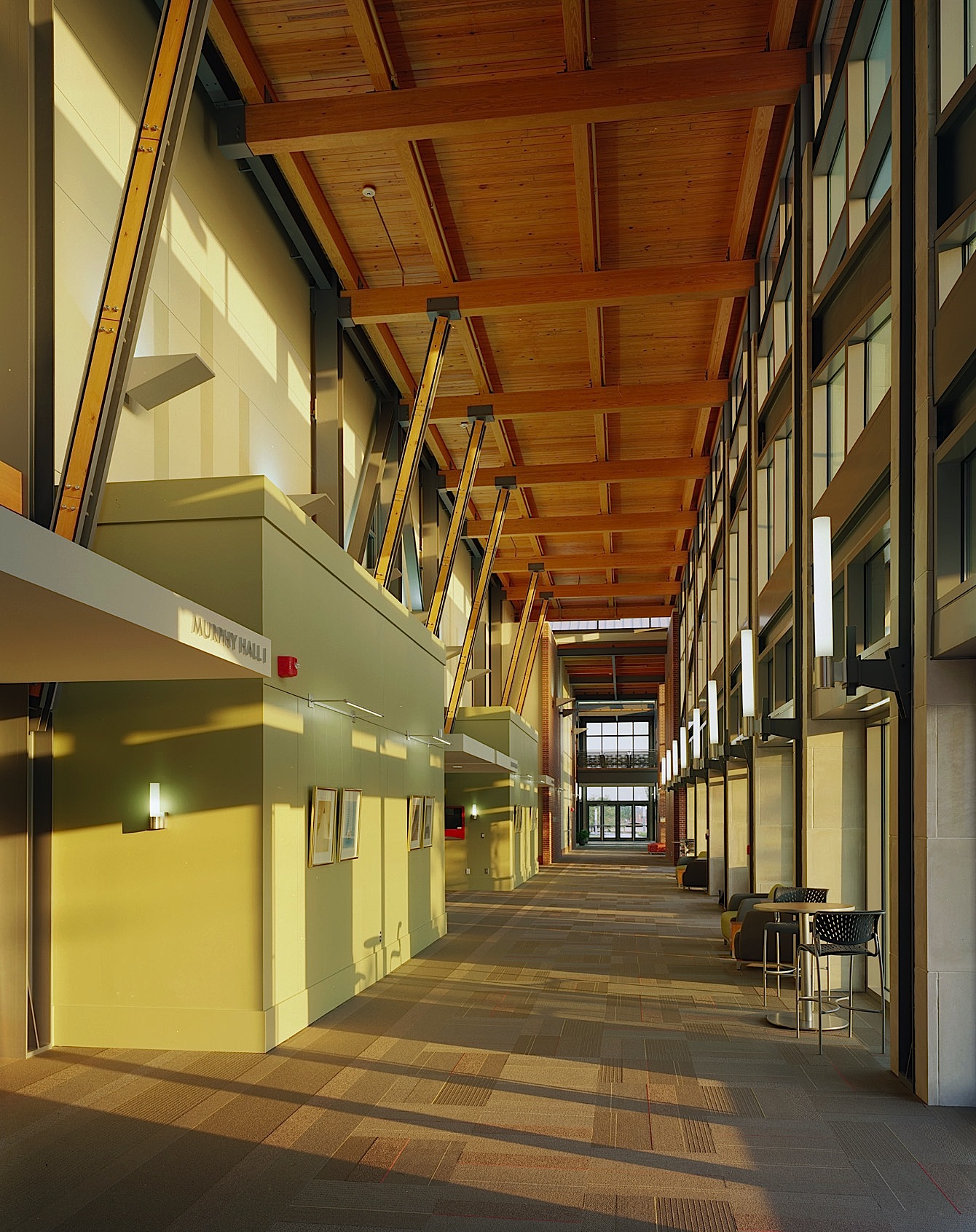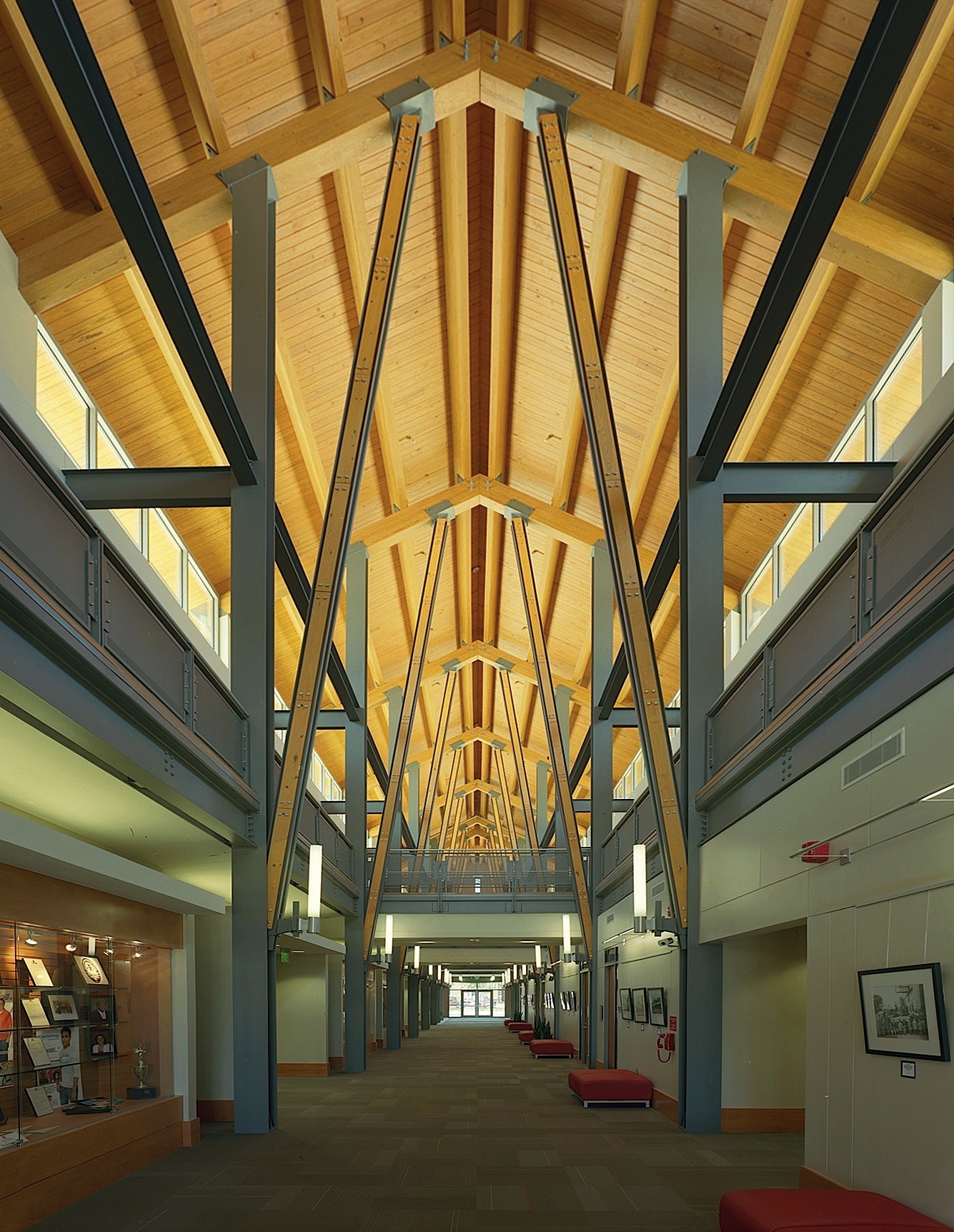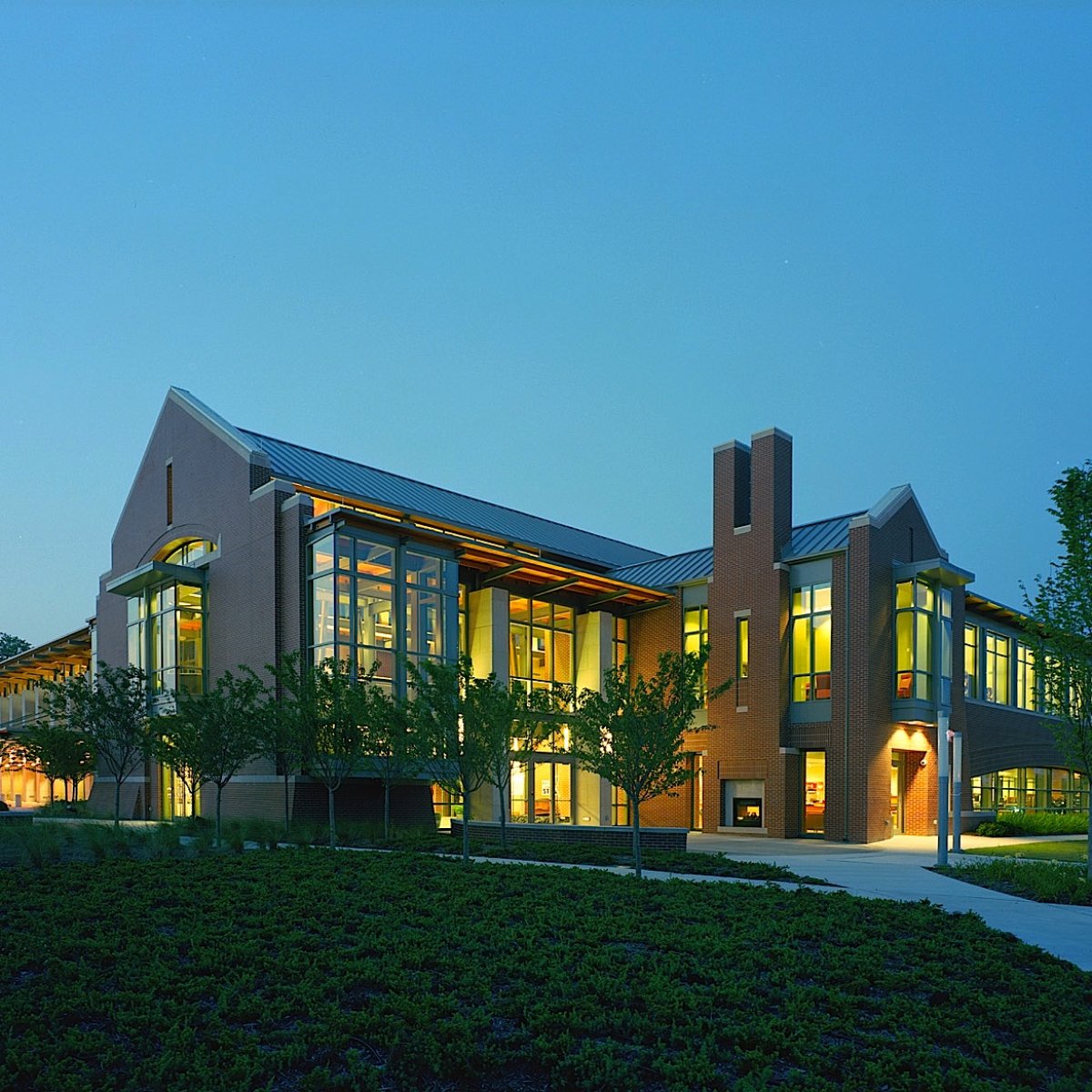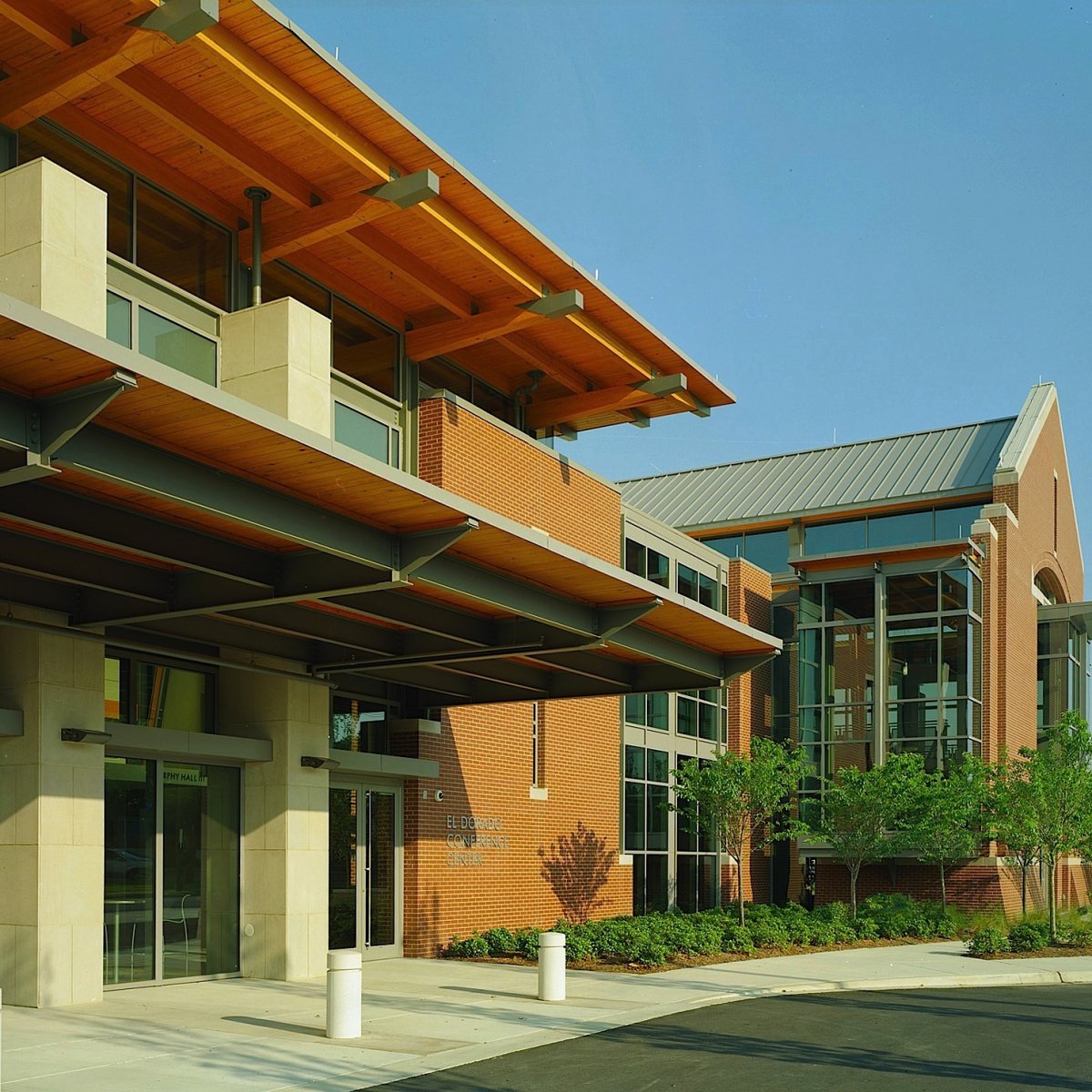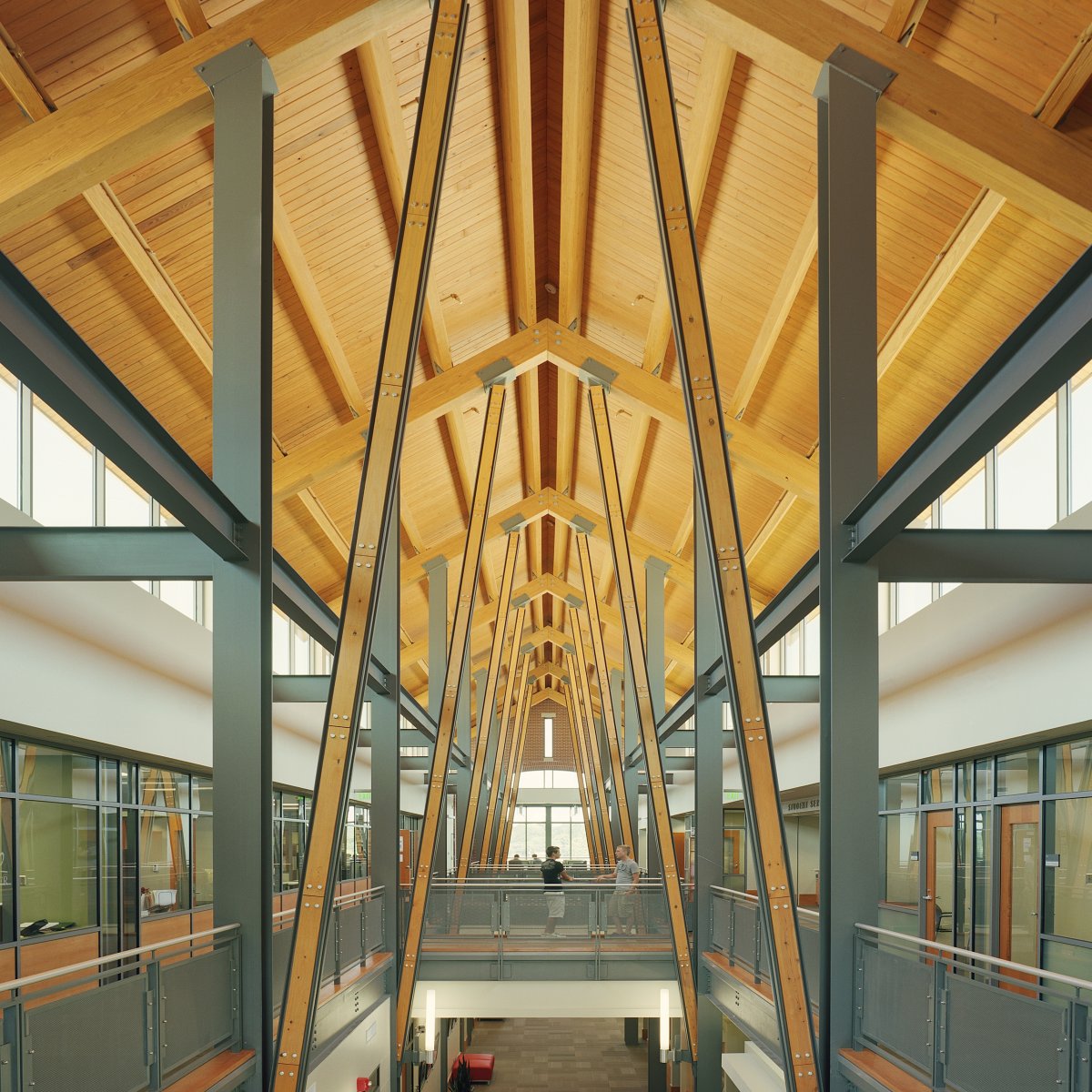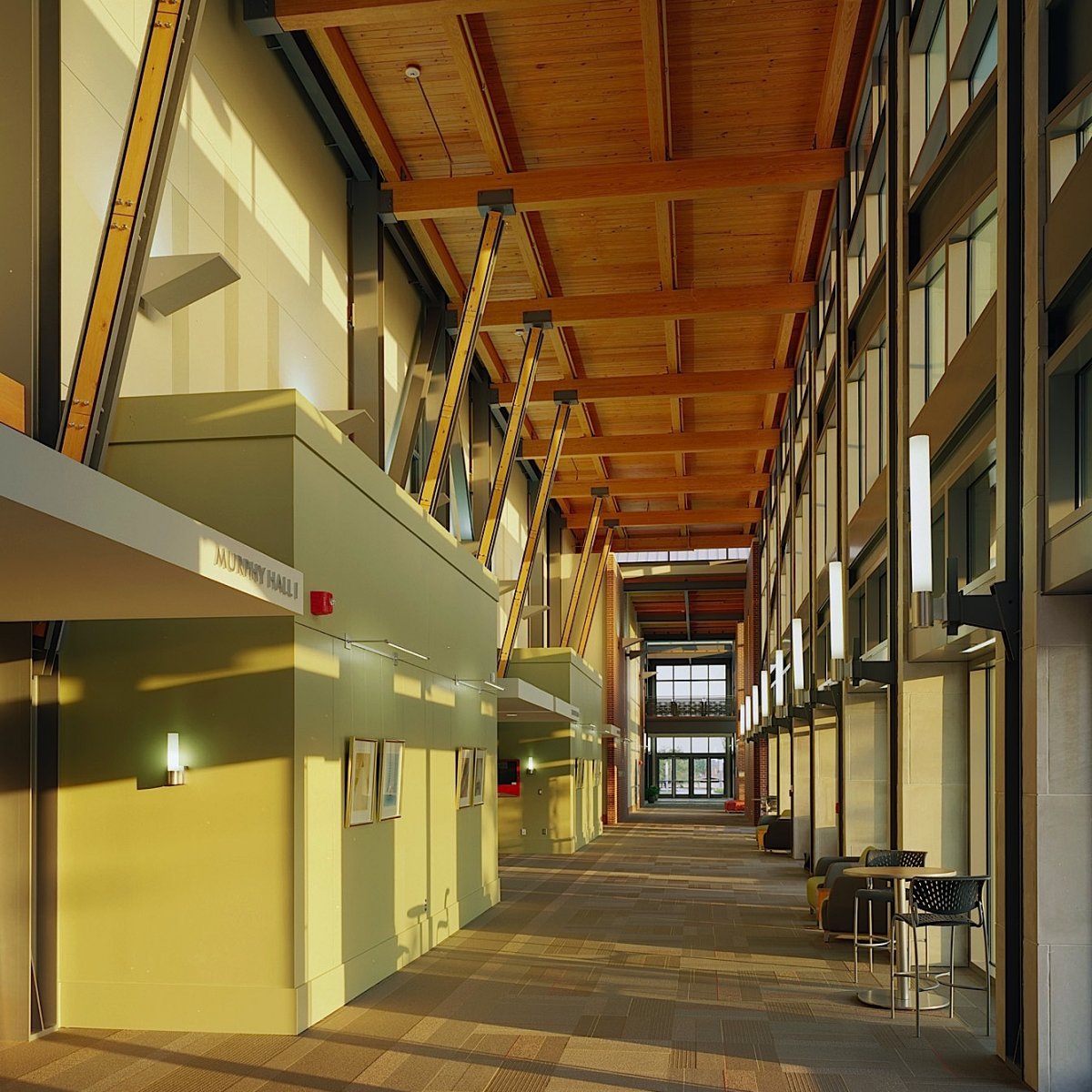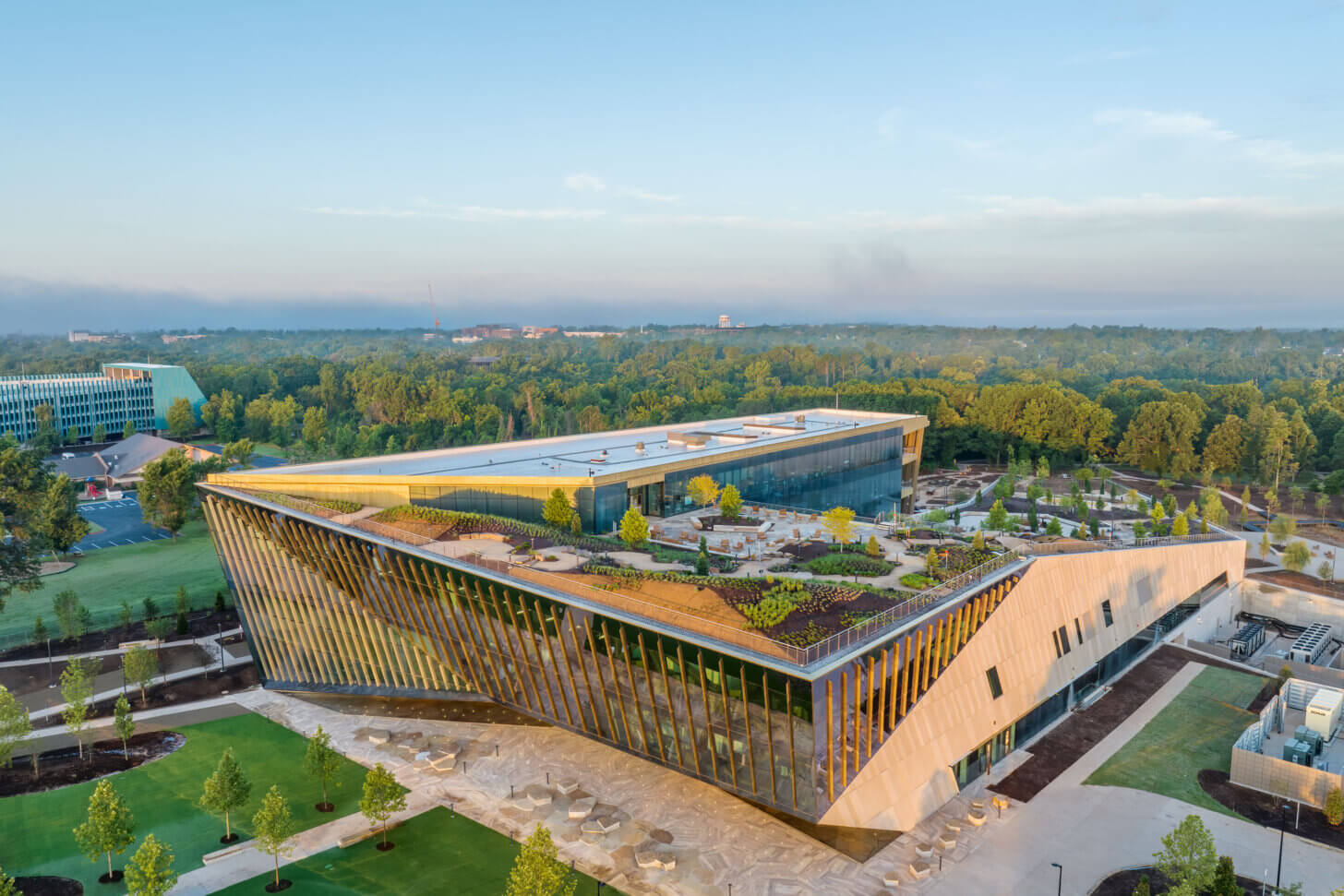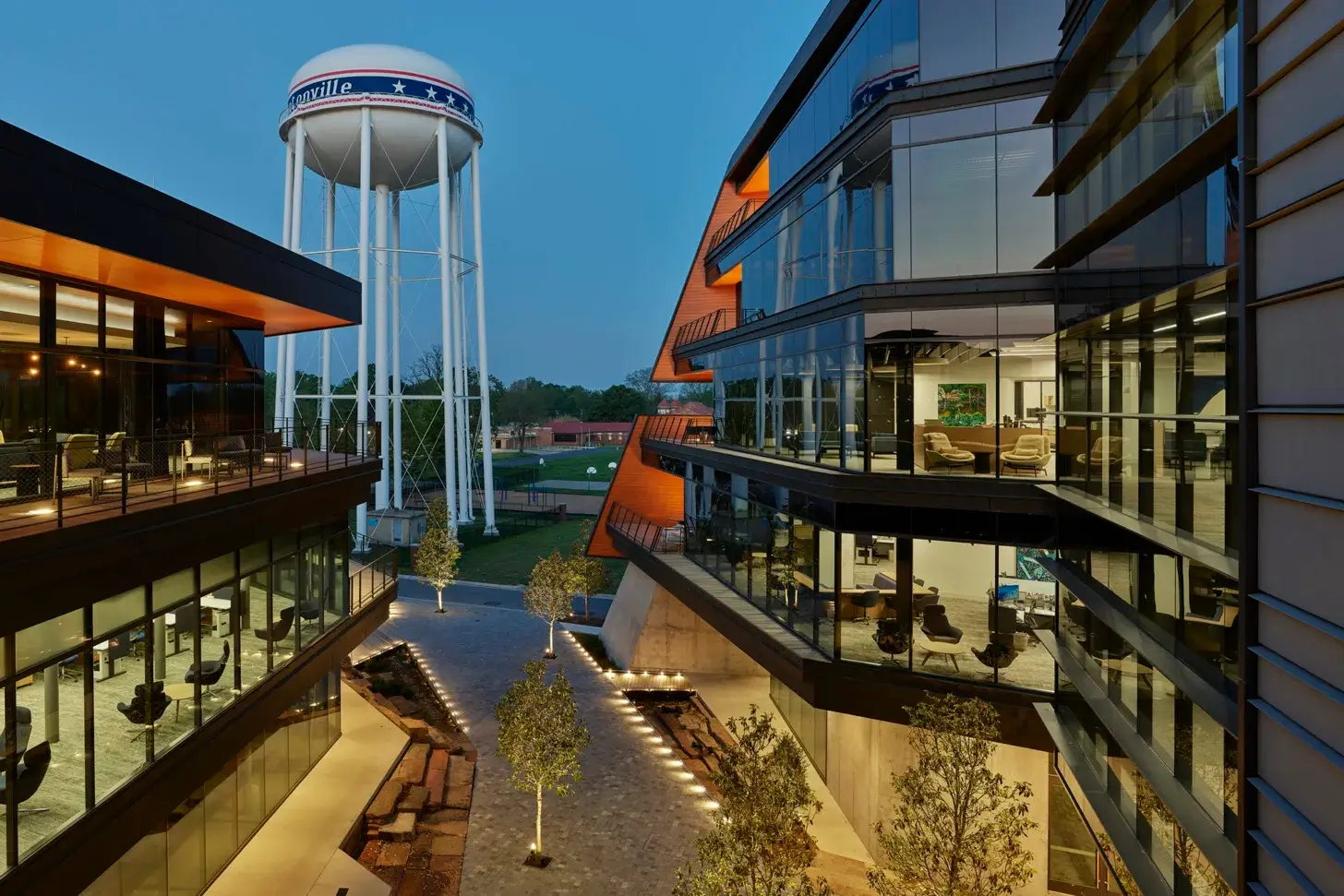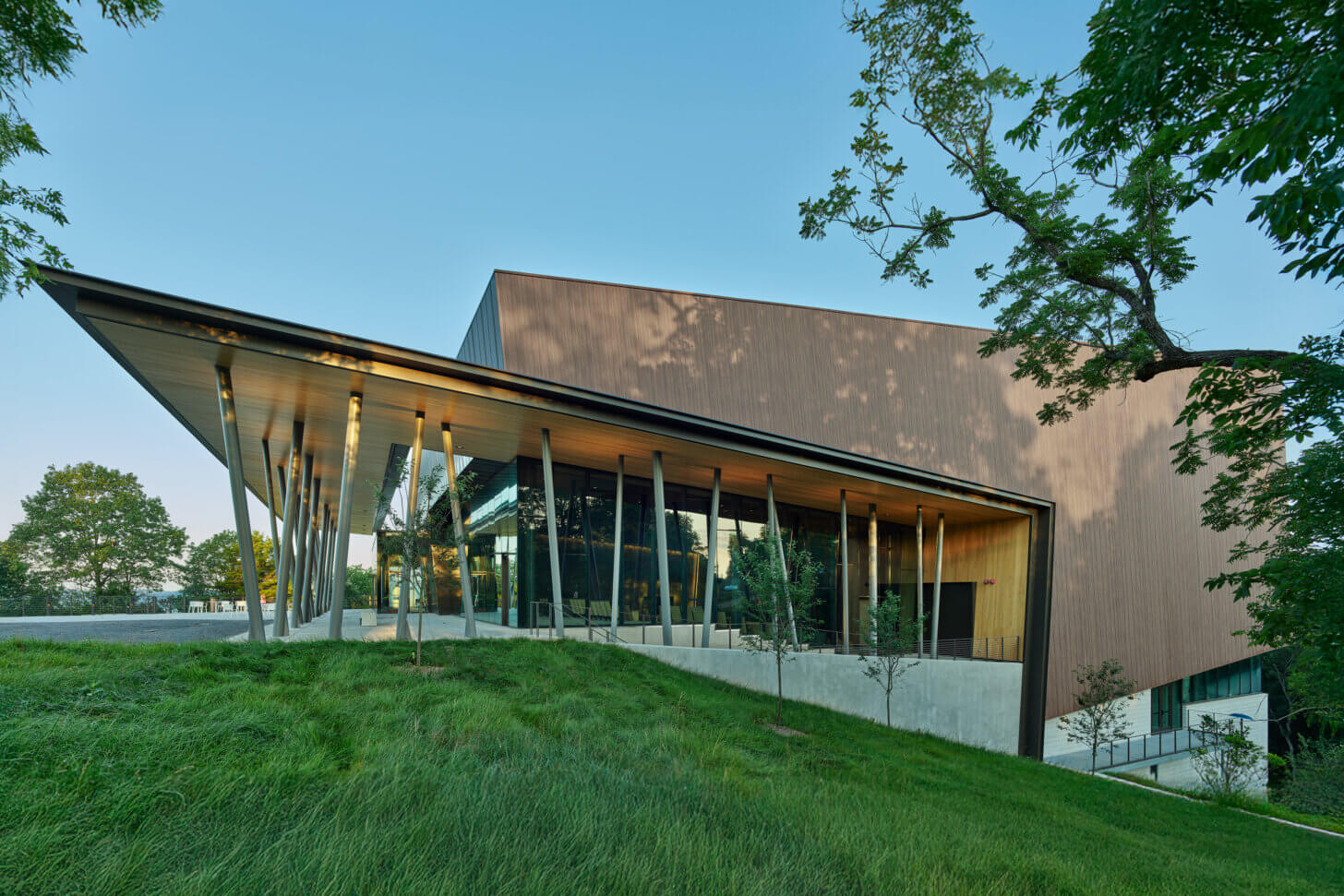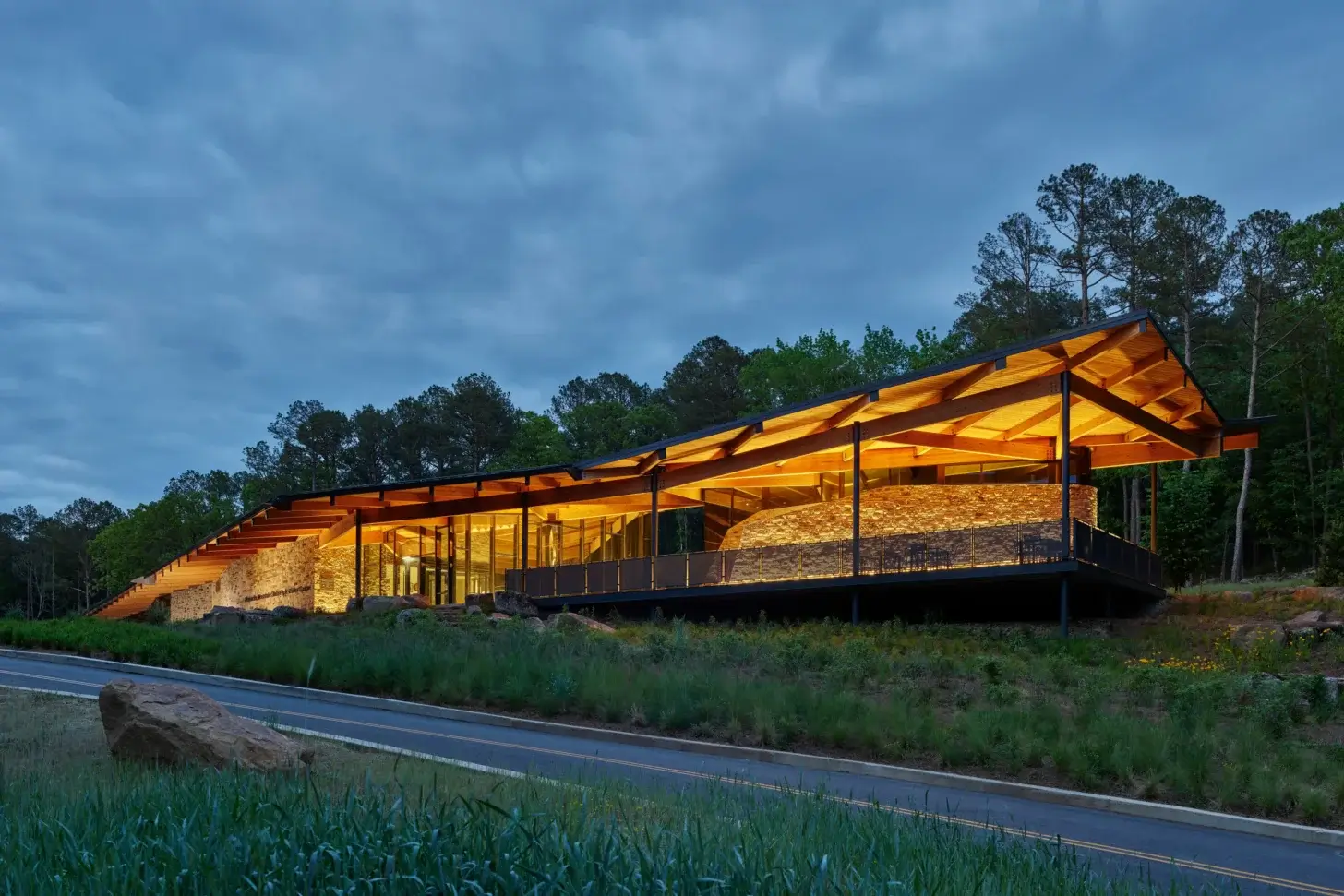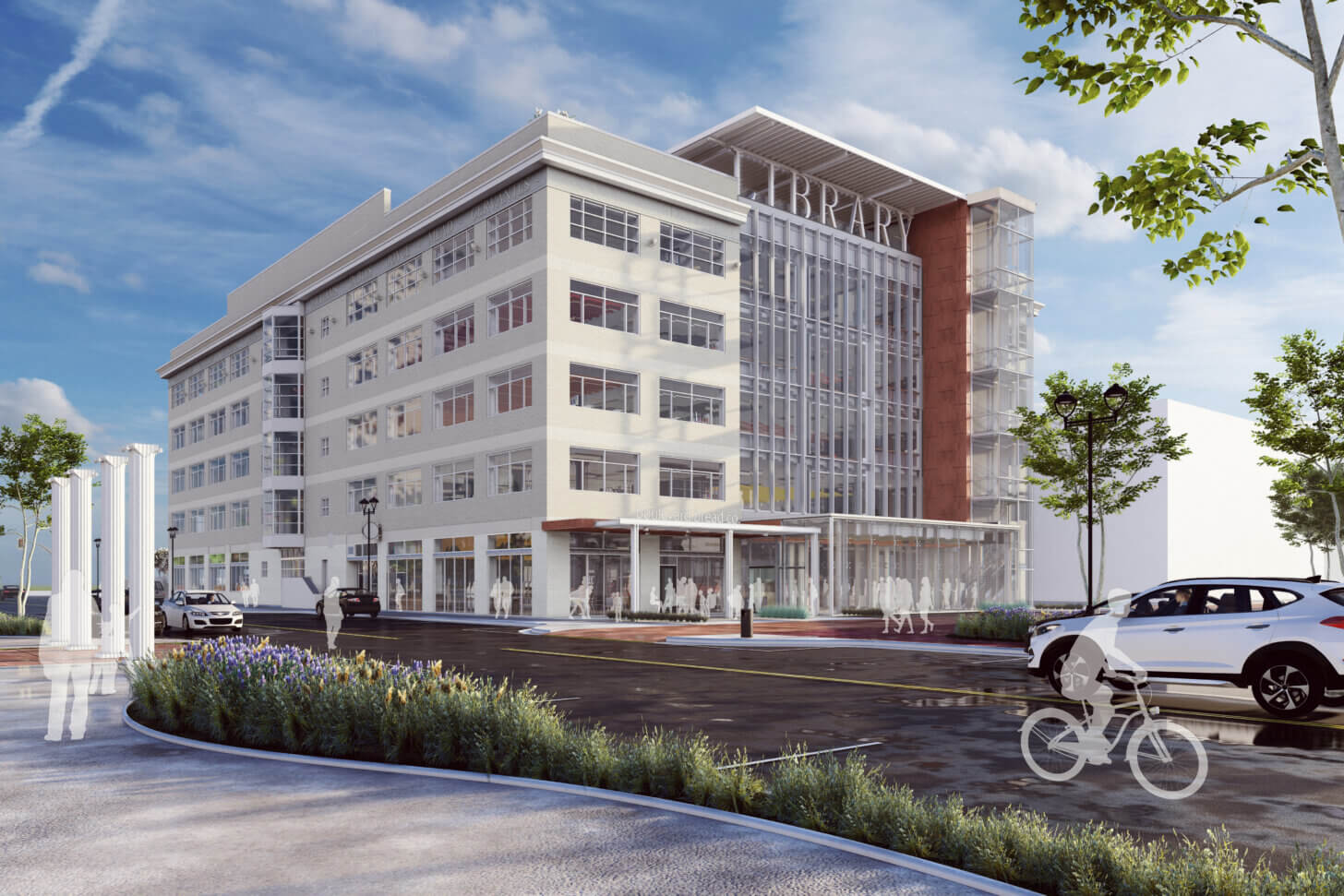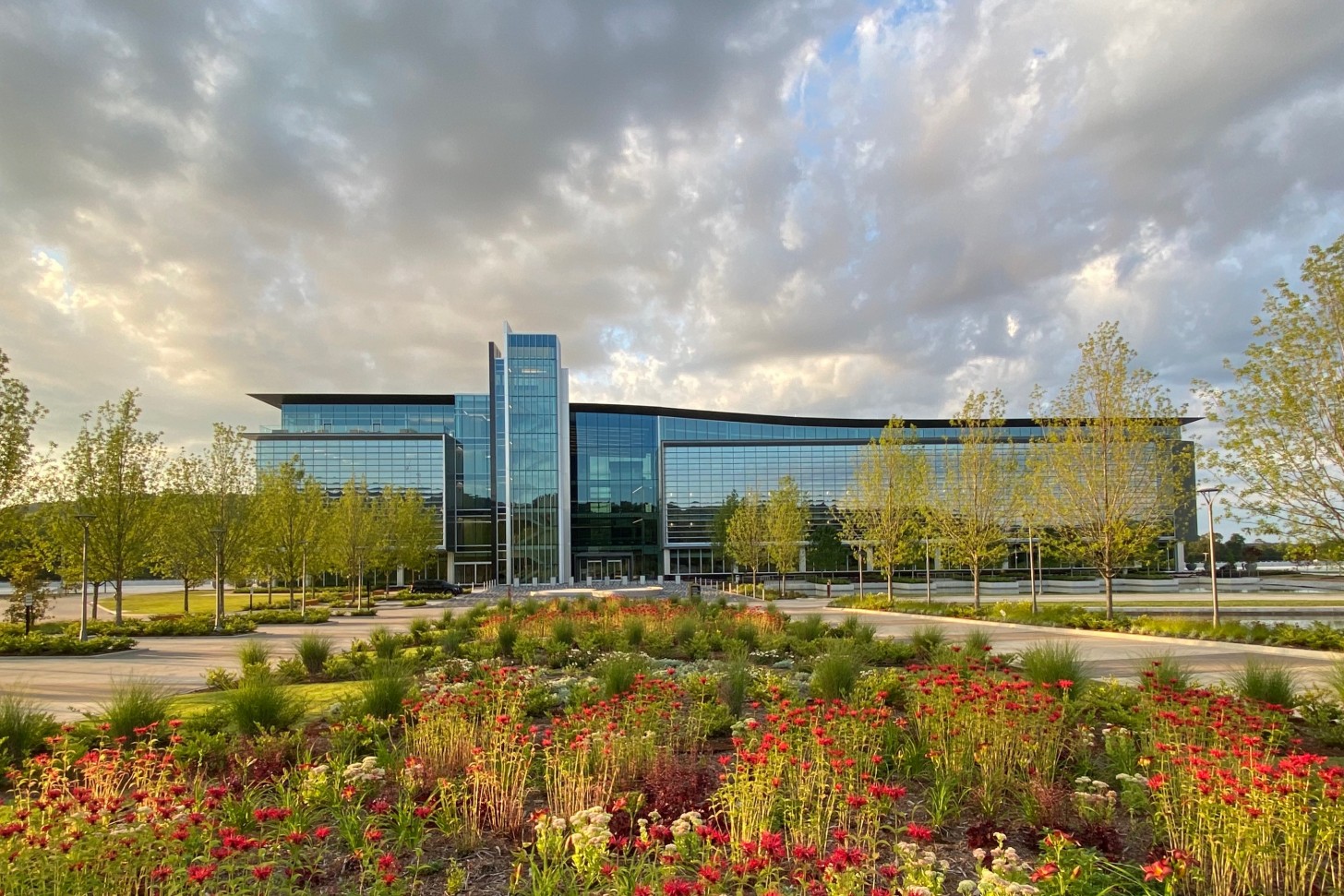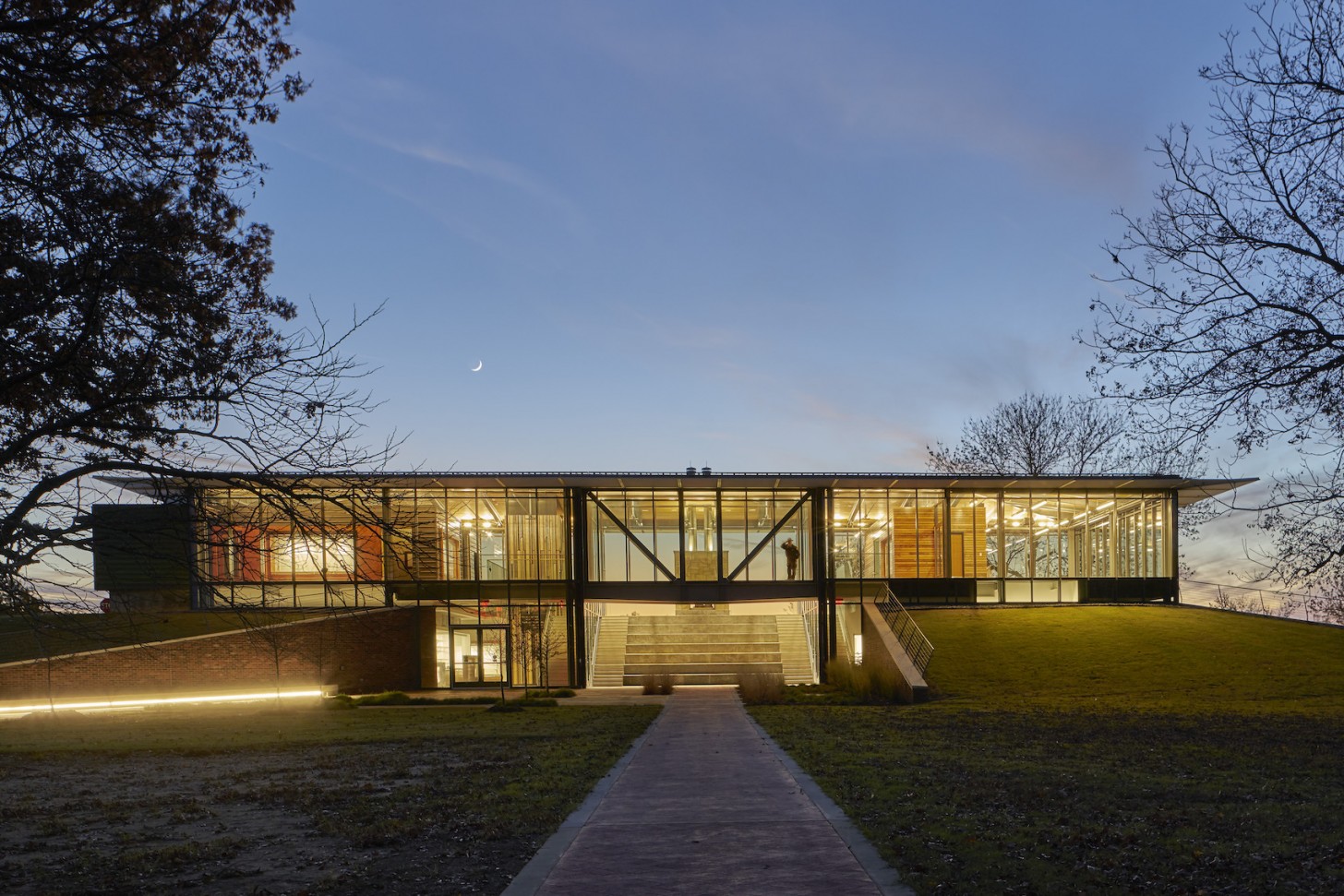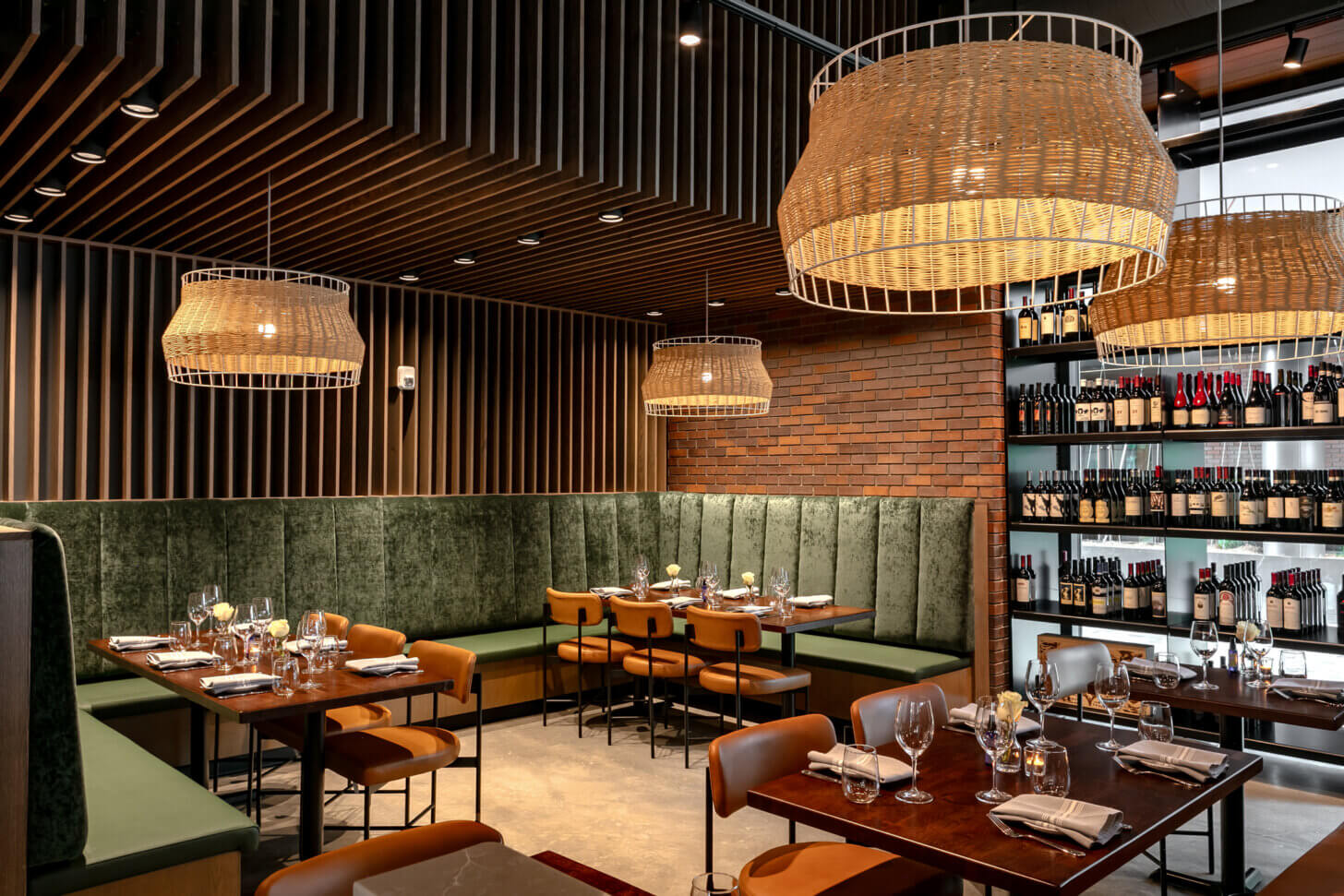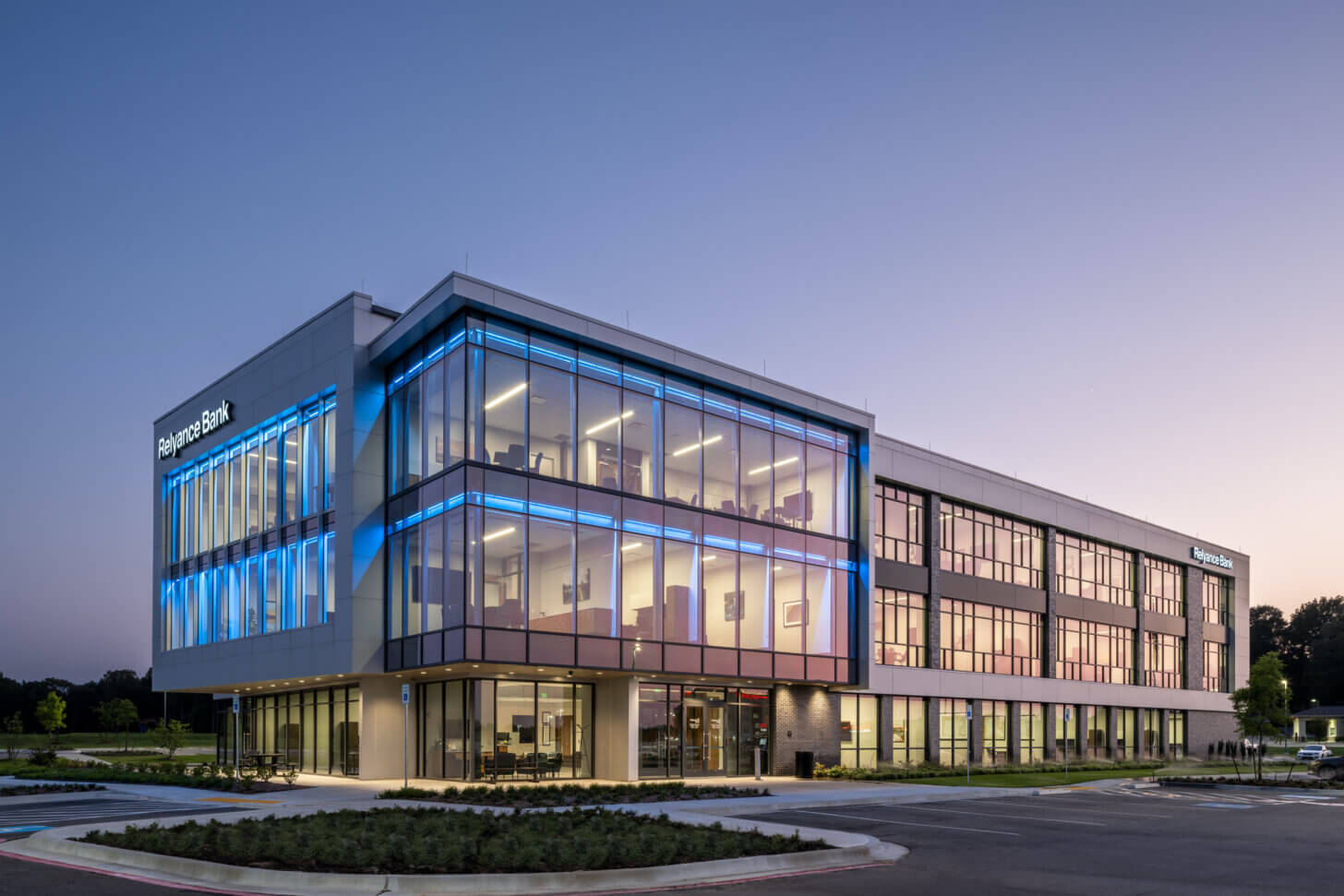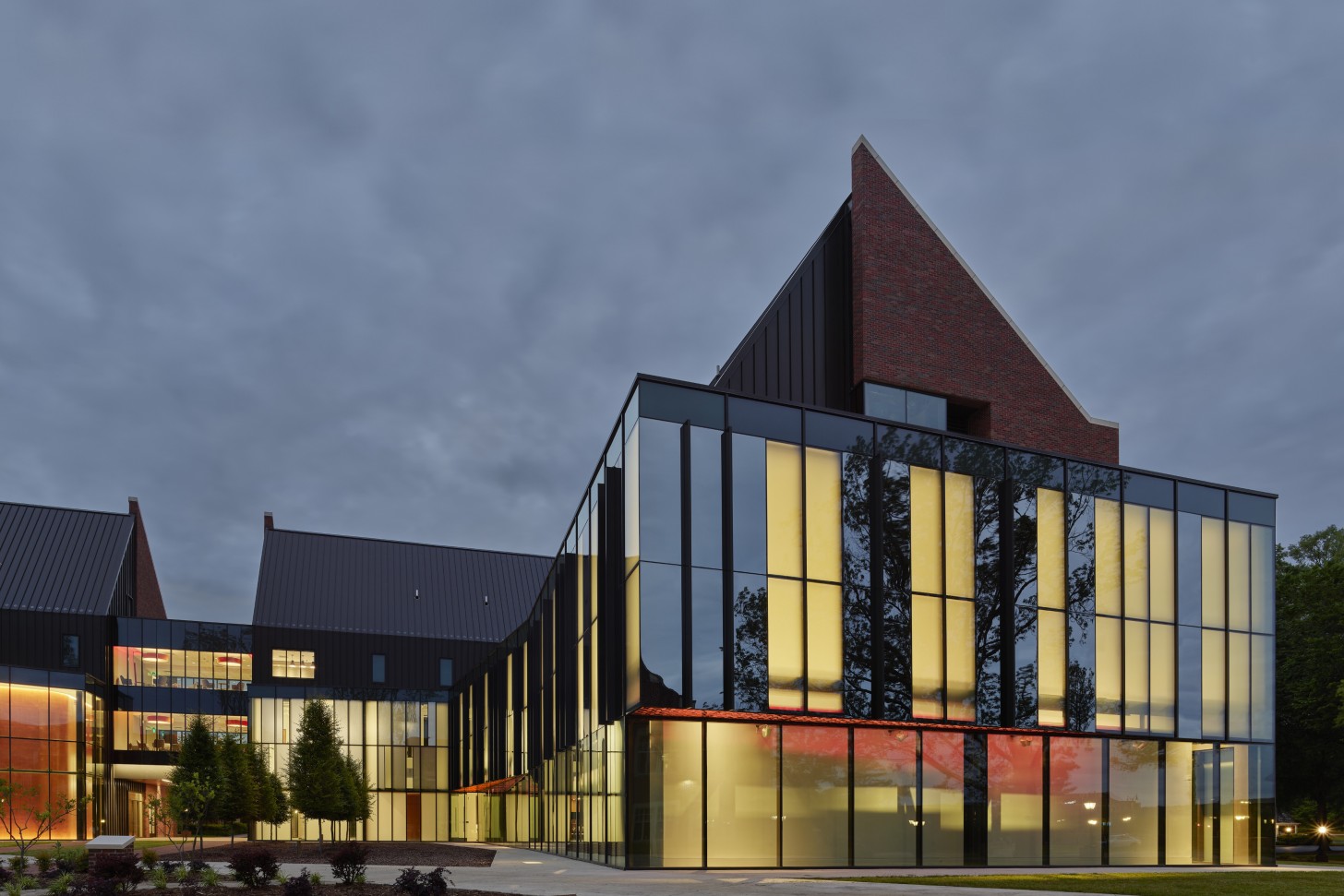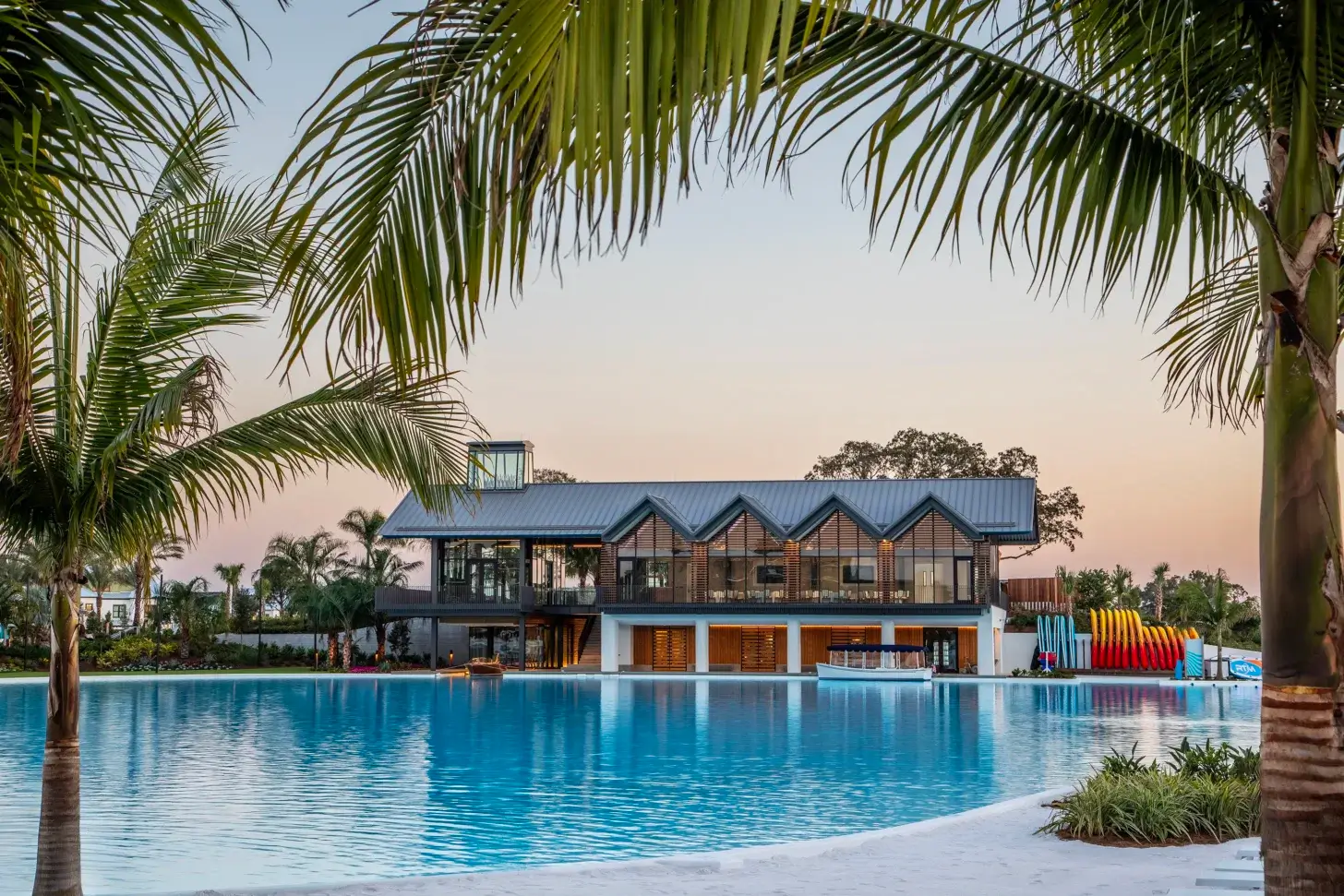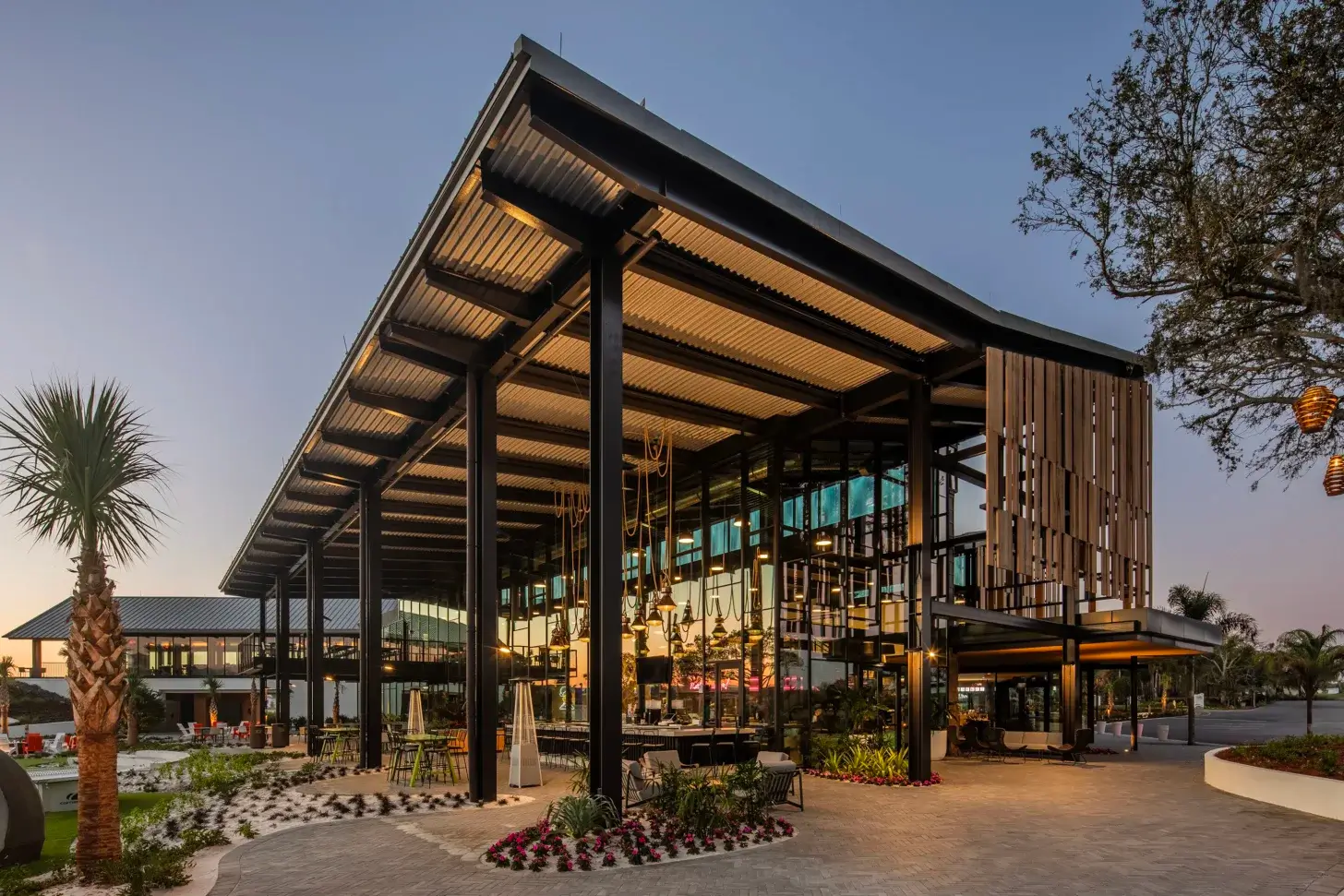El Dorado is not a typical sleepy southern town of 19,000 people, but home to one of the world’s best known oil companies, created with the discovery of oil in southern Arkansas in the 1920’s. With oil came the timber industry to pine country, propelling El Dorado into the national spotlight. Drawing from its greatest past and present industries to the Educational advancements of tomorrow, the El Dorado Conference Center creates an architecture intended to help propel the city into a regional meeting destination.
The unique nature of Community ownership – Public, Business, and Education – demanded an architecture that would blend the three seamlessly together, creating a place for interaction and learning. With three constituent groups came different desires for architectural styles. All agreed, however, that the building should exude a timeless quality; it should look forward and to the past, but none would accept overtly modern. Instead of relying on cliché of repeating a historic style, the design focuses on physical and emotional connections: the rich story of place, celebrating the industries of oil and timber that put El Dorado on the map, and the craft of simply building well.
Located between an historic thriving Downtown Square and South Arkansas Community College, the site links “town to gown”, connecting two great sources of public pride. Both influenced a building parti of two soaring naturally lit Public Halls, one on the path to downtown, the other to the College Academic Quad. These interior streets are lined with a café, bookstore, and five meeting/classrooms that can be combined into one or more spaces. The facility also contains a large assembly hall with a capacity for 1,000 seats in banquet style. A full commercial kitchen facilitates catering and banquet dining. SouthArk Community College’s Enrollment Management functions, including counseling, curriculum and financial advisement, training and testing rooms, graces the upper floor overlooking the student street. The great halls’ intersection has become “college central” for Students, but more importantly the Living Room of the Community.

